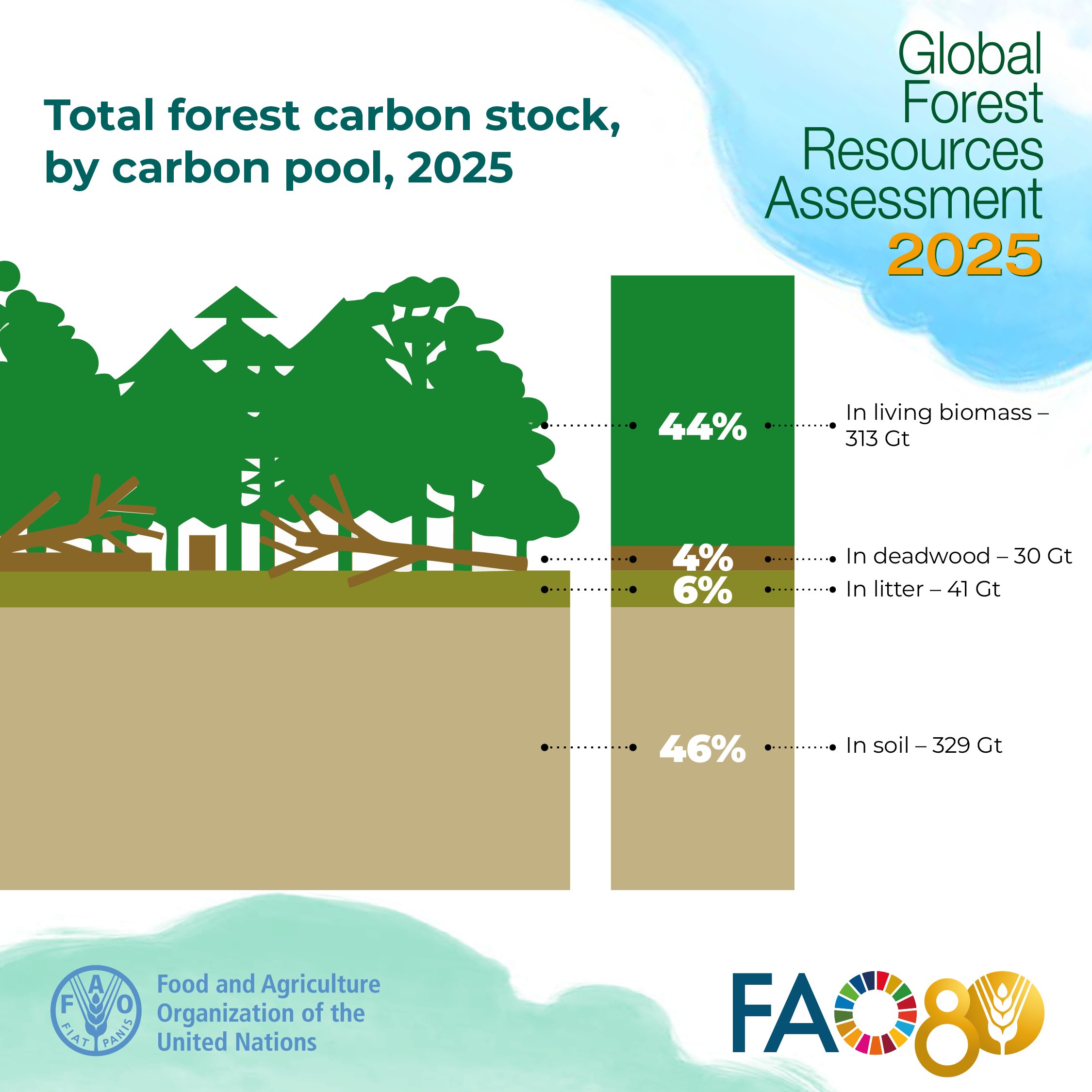Context:
The Food and Agriculture Organization (FAO) of the United Nations recently released the Global Forest Resources Assessment (GFRA) 2025, providing a comprehensive evaluation of the world's forest resources. This report is the 15th edition of the assessment, which has been conducted every five years since 1946.
Key Findings:
The total global forest area is estimated at 4.14 billion hectares, which is about 32% of the Earth’s land area (≈0.5 ha per person).
-
- Annual net forest loss (i.e., deforestation minus expansion) has declined: from around 10.7 million ha/year in the 1990s to about 4.12 million ha/year in 2015-25.
- Primary forests (undisturbed by humans) now cover about 1.18 billion ha, roughly one-third of total forest.
- Forest carbon stocks are estimated at 714 gigatonnes (Gt) globally, underlining the crucial role of forests in climate mitigation.
- About 20% of forests (~813 million ha) are legally protected, and over 55% (~2.13 billion ha) are under long-term management plans.
- Asia emerges as the only major region to register a net forest area gain between 1990 and 2025, largely driven by countries like China and India.
- The top five countries in terms of forest area are: Russia (~832.6 Mha), Brazil (~486 Mha), Canada (~368.8 Mha), United States (~308.9 Mha), and China (~227 Mha). These five together hold over half of the world’s forests.
- Annual net forest loss (i.e., deforestation minus expansion) has declined: from around 10.7 million ha/year in the 1990s to about 4.12 million ha/year in 2015-25.
India’s Performance:
-
- India now ranks 9th globally in terms of total forest area, advancing from its previous 10th place. Its forest cover is reported at about 72.7 million ha.
- India retains its 3rd position globally in terms of annual forest area gain for the period 2015-25, with a net gain of ~1.91 lakh ha/year.
- This improvement reflects India’s afforestation programmes, community forest management, policy initiatives (Green India Mission, compensatory afforestation) and stronger monitoring using remote sensing and GIS.
- India now ranks 9th globally in terms of total forest area, advancing from its previous 10th place. Its forest cover is reported at about 72.7 million ha.
Why GFRA 2025 Matters for India & Policy:
Forests play vital roles in carbon sequestration, biodiversity conservation, water cycle regulation, soil protection and livelihoods of forest-dependent communities.
· The data supports India’s commitments under the Paris Agreement, Nationally Determined Contributions (NDCs) and the Global Biodiversity Framework.
· The slowing of global deforestation and India’s performance present opportunities for India to assume leadership in forest restoration, climate mitigation and south-south cooperation.
Conclusion:
The GFRA 2025 delivers cautiously positive news: the world’s forests cover about one-third of land area, and the rate of net forest loss is slowing. For India, the rise to 9th position globally and maintaining a top-3 rank in annual gain reflect sustained efforts and provide strong policy impetus. However, the real work lies ahead—ensuring forests are healthy, resilient and managed sustainably, while contributing to climate, biodiversity and human welfare goals.







